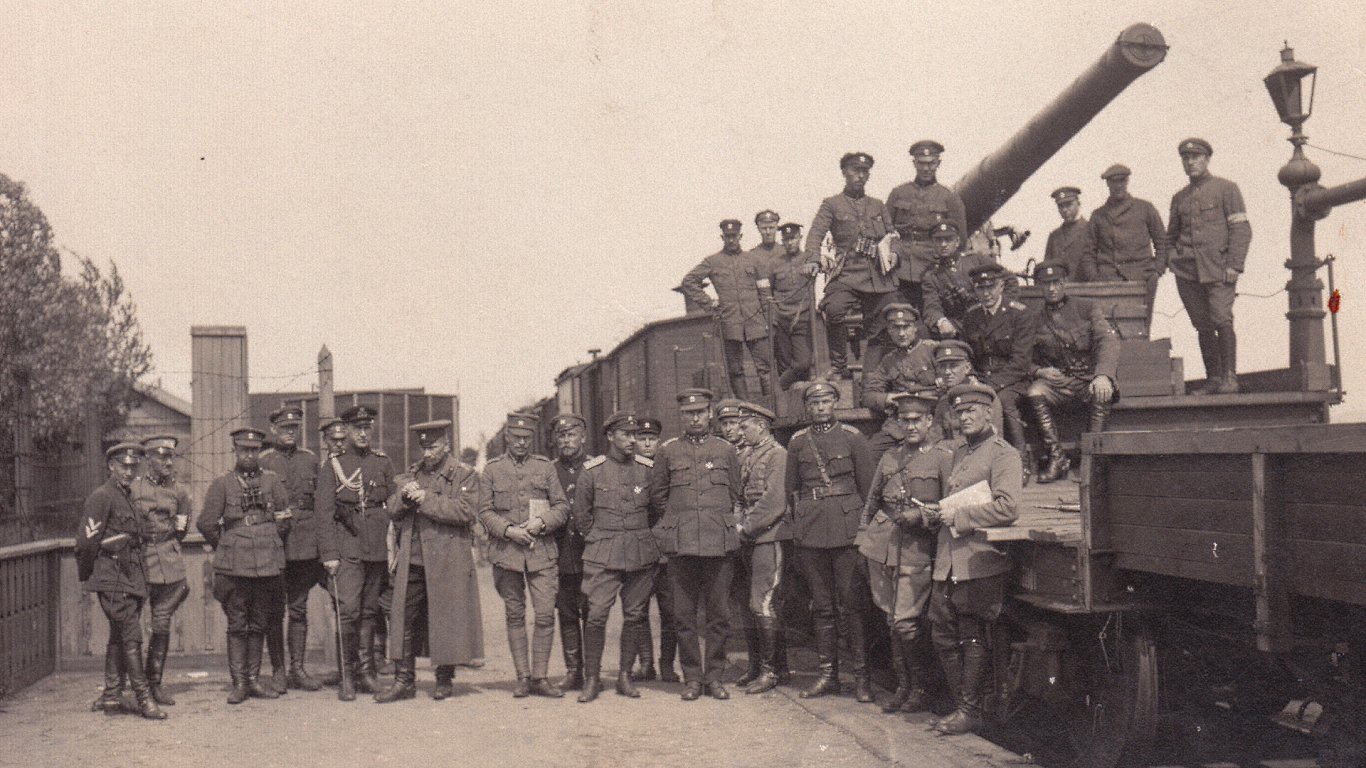The Battles of Cēsis also constitute an aspect of history that has not been comprehensively covered either in contemporary historical research or in collective memory. It is because for half a century, during the Soviet occupation period, historians were denied the chance to conduct wholesome research on this topic. It is also incorrect to assume that the history of the Independence War of Latvia, including the course of the Battles of Cēsis, has been thoroughly researched in the 1930s.
The history of Latvia does not begin or end at the present-day state borders of Latvia and is more than just the history of the ethnic Latvians. The Battles of Cēsis, which were fought with the active participation of not only German and Estonian armed forces, but also the Baltic German troops – the latter constituting an important part of the people of Latvia – is a particularly striking example of the links that ties the history of Latvia not only to the situation in the neighboring lands and nations, but also to developments in a broader European context.
The course of the Battles of Cēsis
|
Location |
The environs of Cēsis and Limbaži towns |
|
Time |
5-24 June 1919 |
|
Correlation of forces |
|
|
The Iron Division of the German Army and the Baltic Germans’ land defense forces (Baltische Landeswehr) |
7000 troops, 46 cannons and 274 machine guns |
|
Units of the Estonian army with the Northern Latvian Brigade as part of it |
9500 troops (including 2700 Latvians), 3 armored trains, 32 cannons, 250 machine guns and automatic rifles |
|
The outcome |
The victory of the Estonian and Latvian units |
After the liberation of Riga from the Bolshevik forces in late May 1919, the Baltic Germans’ land defense forces (Baltische Landeswehr) and the Iron Division received an order from General Rüdiger von der Goltz, the commanding officer of the German forces in Latvia to advance north-eastward and take control over Vidzeme region of Latvia that had been seized by the Estonian army and the Northern Latvian Brigade, which formed part of it. On 1 June, units of this Brigade had reached Cēsis. These troops were politically subordinate to Kārlis Ulmanis’ Provisional Government, which after the German coup d’etat on 16 April 1919, operated from the steamship “Saratov”, anchored in Liepāja, under the protection of British vessels.
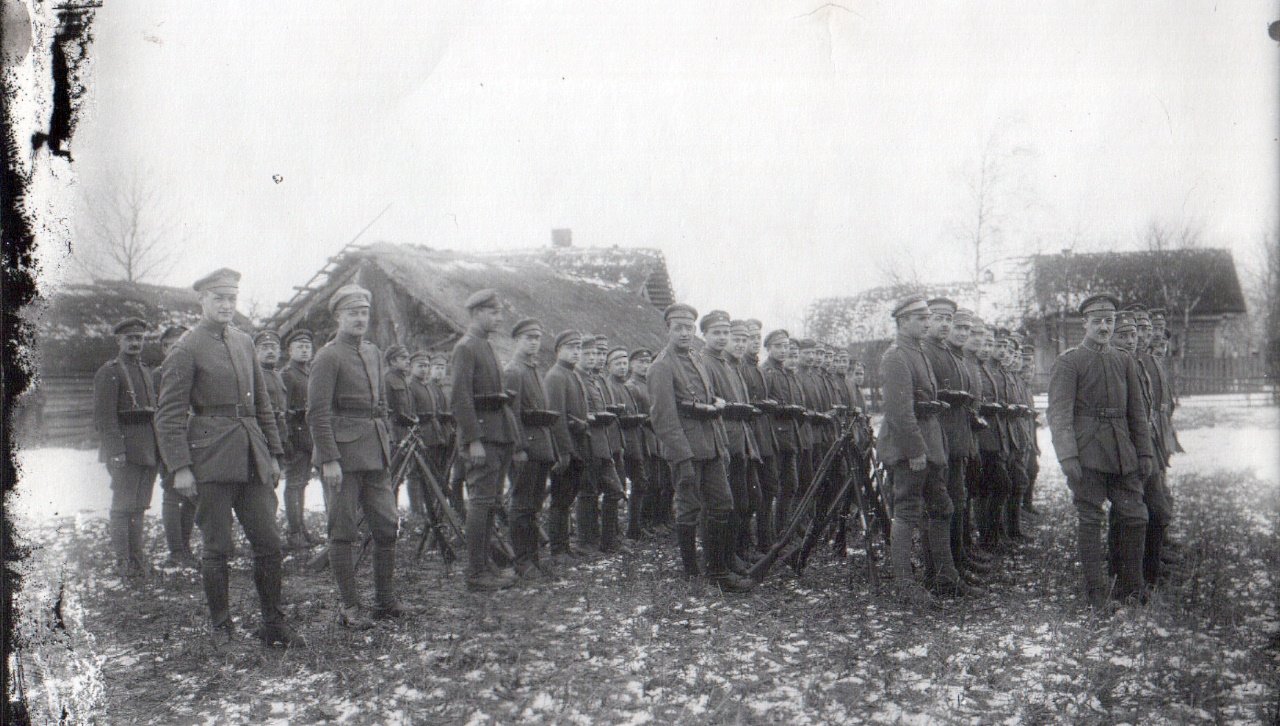
On 3 June representatives of the Landeswehr arrived in Cēsis. General Johan Laidoner, the commander-in-chief of the Estonian forces, demanded the Germans to withdraw, leaving the railway between Ieriķi and Gulbene under Estonian control. The German forces did not accept the ultimatum and the subservient-to-the German government of Andrievs Niedra decided to direct the German forces to Valmiera and Valka to end the “Estonian occupation”. When an Estonian armored convoy left Cēsis on 5 June 1919 to monitor compliance with the Estonian demand, the Germans tried to ambush it. The attack was unsuccessful, but the convoy was nonetheless forced to withdraw to Cēsis.
On 6 June 1919, the Landeswehr’s units attacked the Northern Latvian Brigade Cēsis 2nd Regiment, whose formation was not yet completed, in the village Līvi. The Latvians were supported by fire from the Estonian armoured convoy, but were still forced to retreat to the River Rauna. The Germans captured Cēsis. On 8 June 1919, an Estonian regiment, which had replaced the 2nd Latvian Regiment, launched a counterattack. The Germans repelled it and demanded Estonian withdrawal to the line Ainaži-Valka-Izborsk.
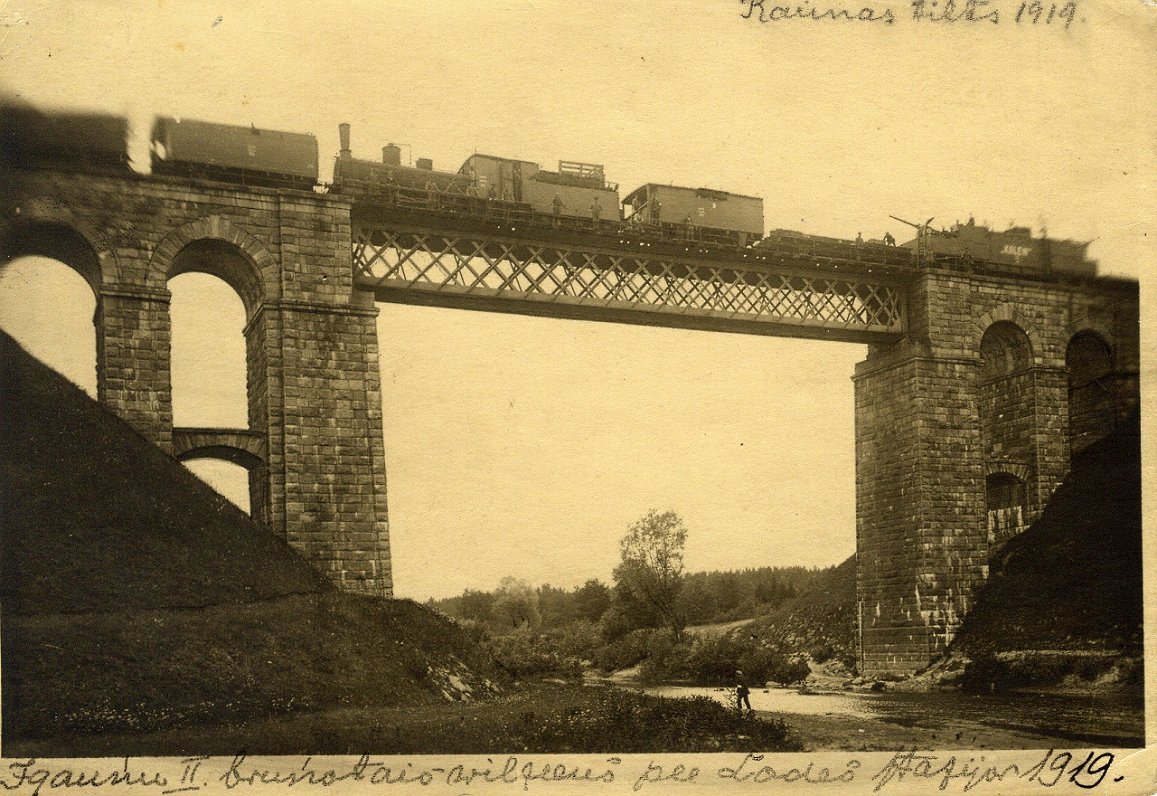
In this situation, the Allied missions took initiative and organized negotiations in Cēsis on 10 June 1919, which resulted in signing an armistice. In Paris the Allied Powers issued a decision prohibiting German forces’ further movement towards Estonia. At the same time, the Entente took responsibility to supply the Baltic States armies. Nevertheless, the Germans rejected the demand. Under the command of General Rüdiger von der Goltz the units of the Iron Division were incorporated into the Landeswehr, creating the “Latvian troops” subordinate to A. Niedra’s government. Already on 6 June, A. Niedra’s Cabinet of Ministers granted Latvian citizenship to Major Alfred Fletcher, the commander of the Iron Division.
The ceasefire lasted until the morning of 19 June 1919, when the Landeswehr assumed the offensive in the direction of Limbaži. On 20 June 1919, the Iron Division units captured Lielstraupe. On 21 June 1919, the German forces broke through between the 2nd Latvian and 3rd Estonian Infantry Regiments. However, the Estonians managed to stop their offensive. On 22 June 1919, the Estonian forces launched a counterattack, forcing the Germans to retreat. The Iron Division tried to save the situation, but the Estonian cavalry units already had reached its rear. On the morning of 23 June 1919, the Estonian and Latvian units entered Cēsis. The Estonian 9th Infantry Regiment launched a simultaneous attack on German positions in the vicinity of Limbaži, forcing them to retreat. The Germans’ attempt to entrench in the World War I fortifications by Inčukalns also failed as they had to leave these positions on 26 June 1919. On 27 June 1919, the Germans retreated to the line of the River Jugla, not far from Riga.
By July 1919 the Estonian forces captured settlements Daugavgrīva, Mangaļsala and Vecmīlgrāvis that today constitute suburbs of Riga. The 3rd Estonian division even launched artillery bombing of Riga, killing dozens of civilians. This created panic among the German forces and the Baltic German population of Riga, leading to a speedy evacuation. Already on 26 June 1919, Niedra’s government had left the city and ceased all activities.
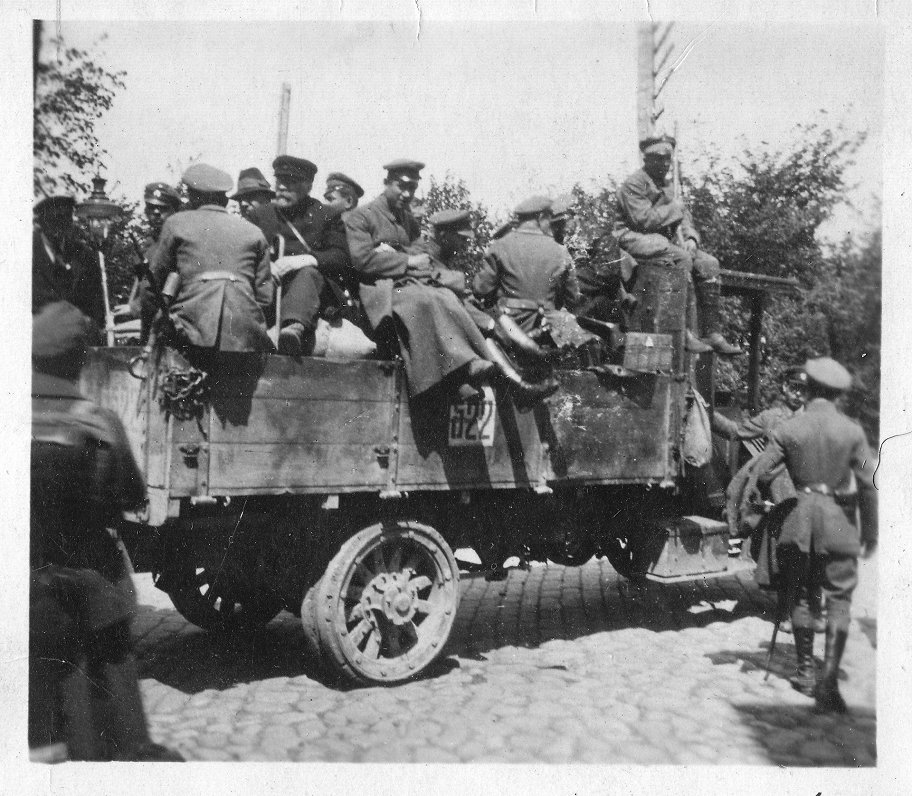
Further warfare was affected by the Entente position. On 30 June 1919, the representatives of Allied missions in Liepāja mandated Emmanuel du Parquet, chief of the French mission, to organise armistice talks, which resulted in signing a treaty in Strazdmuiža, on the shore of Lake Jugla in the morning of 3 July 1919. The treaty provisions required that hostilities be suspended and that the German forces withdraw from Latvia at the earliest opportunity. Their troops had to be withdrawn from the right bank of the River Daugava, Riga and its vicinity by the evening of 5 July 1919, while the Estonian forces had to halt at the site they had stopped on 3 July 1919 . The Allies assumed responsibility for establishing the provisional Riga city governance.
This concluded a complicated phase in the Independence War of Latvia. The victory at Cēsis allowed Ulmanis’ Provisional Government on 27 June to disembark the ship anchored in Liepāja and on 8 July to return to Riga and take control over the territory of Latvia, which was now liberated from the Bolshevik rule. A. Niedra’s pro-German government ceased to exist. A united Latvian Army was formed and it had to brace itself for heavy battles yet to come: against Pavel Bermondt’s troops in Zemgale and Kurzeme regions and the Red Army in the Latgale region.
The context of the Paris Peace Conference
The dominating perception of the Battles of Cēsis is basically accurate: during these battles, the Latvian forces, heroically fighting side-by-side with the Estonians, defeated the reactionary German forces, which after the conquest of Riga, instead to pursuing the Red Army into Latgale, moved to Vidzeme, aspiring to drive the Latvians and Estonians out of this region and establish control over it. However, such an assessment of the situation almost completely disregards the international context, which made such a scenario of history impossible. This context must not be ignored if we want to understand our past, as this can be done only by examining it in a broader context of developments in Europe as a whole.
We must bear in mind that at that particular moment, the negotiations at the Paris Peace Conference were entering the decisive phase: on 7 May 1919, the Allies finally submitted provisions of a peace treaty to the German delegation, which had been summoned to the French capital for this purpose and had not been involved in the elaboration of these provisions. The provisions resembled an ultimatum, containing extremely harsh, apparently even unacceptable demands pertaining to territorial concessions, reparations, restrictions on the size of the armed forces, etc. The German side managed to mitigate them only on insignificant issues. As part of the humiliation of Germany, the representatives of the victorious nations did not deem it necessary to meet personally with the German delegation, which was present at the same venue, preferring to contact it through correspondence only.
At the same time, in the camp of the German patriotic forces and the corps of the German armed forces officers a conviction took root that the peace provisions were unacceptable and thus, upon the expiration of the armistice, on 23 June warfare between Germany and the Allies would resume. Such considerations dictated the actions of the German armed forces in several of their dislocation sites in Central and Eastern Europe, including the Baltic states.
It was these aspects that lay behind the political motivation of General von der Goltz, the commanding officer of the German forces and his headquarters as they launched the Cēsis operation. It was aimed at creating a bridge-head for gaining control over the entire region, eventually joining forces with General Nikolai Yudenich’s anti-Bolshevik Northwest Russian Army, which was situated in Estonia and in May had launched another seemingly promising attack on Petrograd (mod. St. Petersburg). The Germans even attempted to send a written appeal to Yudenich to join forces in order to eradicate the independence of Latvia and Estonia, but the Estonians intercepted the aircraft carrying the German envoys.
The Allies, too, believed that full-scale military activities could resume. On 18-20 June 1919 the numerous representatives of the British, French and USA missions stationed in Latvia received an order to evacuate from Riga and the towns of Vidzeme and Kurzeme regions to Liepāja, after destroying secret documents, which could not be transported. The Allied vessels anchored in the ports in Germany, Riga and Liepāja were instructed to head for the ports of their own respective or neutral countries in order to avoid German artillery fire from the coast. Paradoxically, at the same moment the German forces, too, were leaving Liepāja for the same reason: in order to evade the artillery fire from the Allied vessels upon the resumption of warfare. This complicated international political situation and its military repercussions either in the history of the Latvian statehood and its Independence War in general, or in the history of Liepāja town in particular have not been researched thoroughly yet.
However, on 22 June, shortly before the expiration of the ultimatum, after very difficult negotiations, Germany accepted the demands and on 28 June a peace treaty was signed in Versailles Palace.
The Battles of Cēsis: the correlation of forces and losses
The Battles of Cēsis, being an important turning point in the history of the Independence War of Latvia, are broadly perceived as ranking among the largest-in scale and most important battles in this war, both in terms of their military scope and casualties. However, such perception is unfounded. In fact, the military activities at Cēsis lasted only for a few days and took a relatively small number of lives: during the two phases of these battles the number of killed and missing soldiers in the Estonian army amounts to 133 and in the Northern Latvian Brigade 33; from the German Landeswehr 65 soldiers were killed and 15 are unaccounted for. The exact figure of losses in the Iron Division has not been established, but likely it is proportionally similar.
In terms of the number of involved soldiers and casualties, the largest-in-scale battle of the Independence War is the one that took place in the environs of Daugavpils in 1919. There the Polish and Lithuanian troops clashed with the Soviet Russian army, which had in its ranks also Red Latvian and Estonian units. The total number of casualties of this battle amounts to several thousands. Until recently this battle had been left to oblivion even in the context of the history of the Independence War because the Latvian army as such did not take part in it.
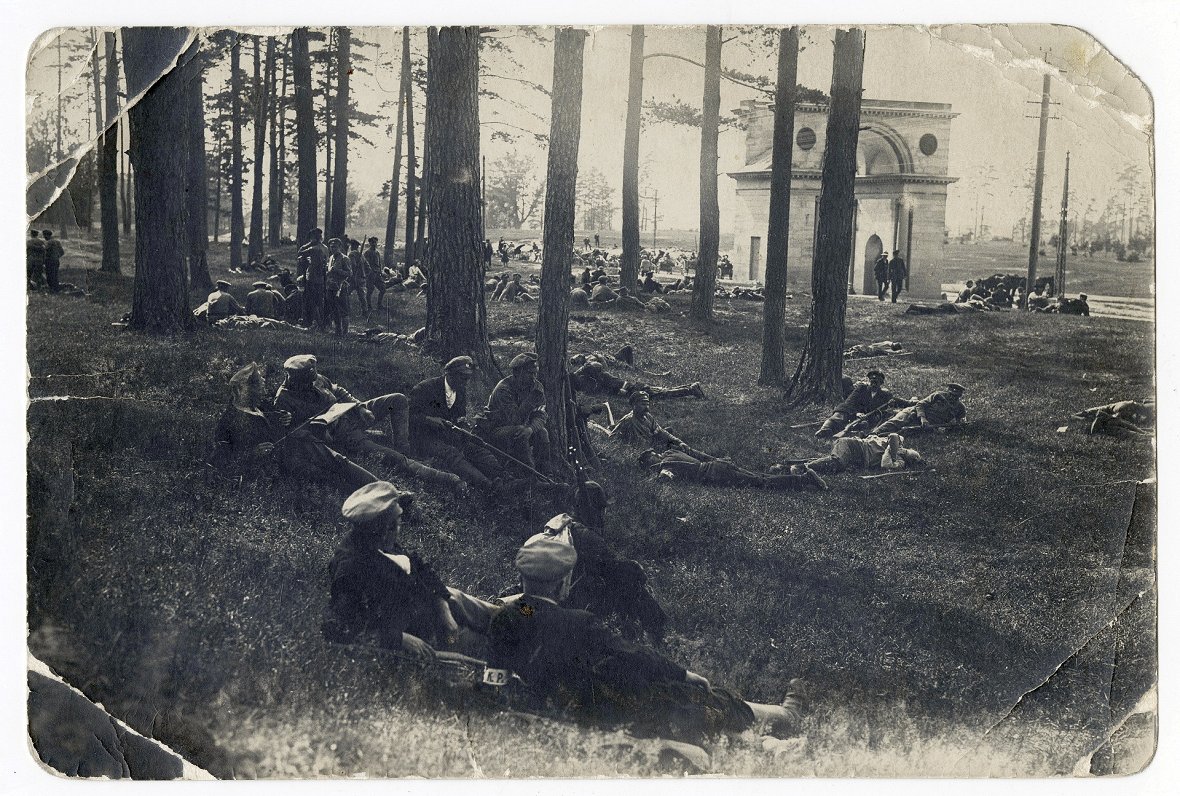
Unfounded is also the view, which took root in the interwar period and has not been fully eradicated yet, that it was the Latvian rather than the Estonian forces that played the dominating role in the Battles of Cēsis. Although nowadays we have overcome the tendency of the 1930s to belittle the role of the Estonian troops or even ignore their participation in the Battles of Cēsis, the understanding of the correlation of the involved forces is not always sufficiently thorough. There is no doubt that it was the units of the Estonian army (approximately two thirds of the involved troops), which, for objective reasons being better organized militarily and having better fighting capacity, took the brunt of the battles.
The evaluation of Andrievs Niedra’s government
The assessment of the Independence War of Latvia is still dominated by the traditional understanding, which took root in the interwar period and according to which every aspect of A. Niedra’s government is treated only in a negative light. However, the latest research suggests that such evaluation is overly one-sided. It first and foremost ignores the fact that the very existence of A. Niedra’s government was a logical outcome of the development of Latvia and Latvian society and that the motivation of the politically conservative Latvians who formed this government was dictated by the unique course of national development that, in the face of the threat of Bolshevism, made inevitable close co-operation with the Baltic Germans, although the latter were seen in a controversial light, or even with Germany, as well as other factors that need to be researched in more detail.
The complicated nature of the operation of A. Niedra’s government and the clearly ethnic Latvian origin of many Landeswehr soldiers illustrate the complexity of the respective period of history and the diverse motivations of the involved parties. For example, one of the participants of the Battles of Cēsis from the part of the German Landeswehr was Captain Hugo Helmanis, a Latvian from Riga who later became one of the most heroic officers of the Latvian army and a figure of legends.
The research on the Battles of Cēsis and their military and political background contributes to the understanding of the complicated course of the Independence War and to the awareness of the complex nature, multitude and importance of the issues of the history of Latvia that still remain to be studied.
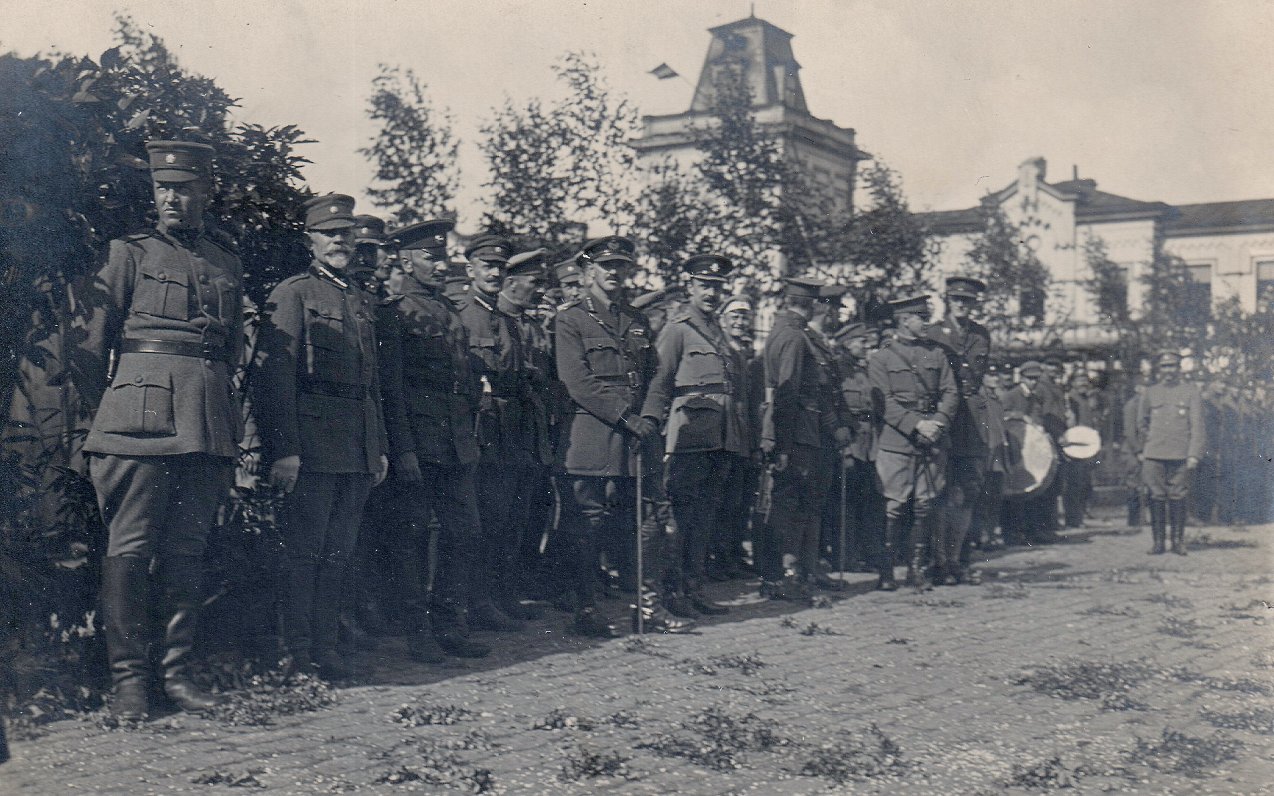
This article is part of the series “The Most Popular Myths in the 20th -21st Century History of Latvia” published on public media portal LSM.lv. The publication has been prepared withing the framework of the State Research Programme project “Navigating the Latvian History of the 20th-21st Century: Social Morphogenesis, Legacy and Challenges” (No. VPP-IZM-Vēsture-2023/1-0003).
